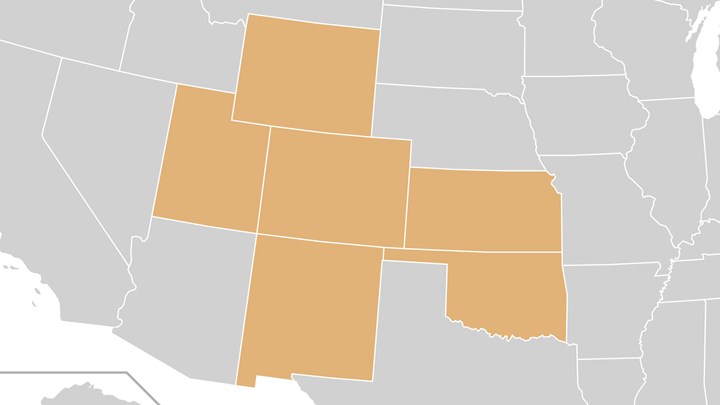
by By Mark Chesnut - Sunday, October 26, 2025

We reported back in April how the Denver-based 10th Circuit Court of Appeals ruled that corner-crossing—crossing from one piece of public land to another without trespassing on adjoining private land—was legal.
On Oct. 23, the Supreme Court of the United States (SCOTUS) declined to hear the appeal in the case, leaving the ruling intact. That means corner-crossing is now legal in six Western states: Wyoming, Colorado, Utah, New Mexico, Kansas, and Oklahoma—a major win for public land access.
At issue is the fact that the federal government owns more than one-quarter of the land in the United States—some 640 million acres—yet much of it is not accessible. The controversy in Iron Bar Holdings v. Cape involved properties where public lands converge at a corner bordered on two sides by private lands. Many Western landowners prohibit access to these areas, even though those crossing at the corners are not technically on their property.
In this case, four hunters from Missouri had used a ladder to cross a corner to hunt on a property in Carbon County, Wyo., bordered on two sides by the Iron Bar Ranch. Subsequently, the landowner not only had the hunters charged with criminal trespassing but also filed a civil trespassing suit alleging $9 million in damages, arguing that the hunters’ brief presence in the airspace above while using the ladder to cross constituted trespassing.
The Iron Bar ranch spans 50 square miles, interspersed with 27 federal and state public parcels totaling 11,000 acres. Except for the points where the public corners touch, most of these parcels are completely enclosed by Iron Bar’s private land.
Citing a law called the Unlawful Disclosure Act, the 10th Circuit judge ruled against the ranch and in favor of the hunters accessing the publicly owned property.
“We extract from these cases that the UIA (Unlawful Inclosures Act) proscribes the ‘exclusive use and occupancy of any part of the public lands’ and further prohibits conduct that ‘prevent[s] or obstruct[s] free passage or transit over or through the public lands,’” the ruling stated. “The controlling principle is that checkerboard landowners cannot maintain a barrier that has the effect of fully enclosing public lands and preventing complete access for a lawful purpose. When a landowner denies checkerboard access, he imposes a proscribable nuisance under federal law, ‘notwithstanding such action may involve an entry upon the lands of a private individual.’”
Of course, owners of the ranch were incensed at the ruling. Determined to keep hunters from crossing at corners and enclosing the public lands for their own use, they appealed the case to the Supreme Court.
Following the Supreme Court declining the case, lead defendant Bradly Cape, one of the hunters who crossed the corner, felt vindicated.
“The first reaction was, ‘awesome, that’s great—it’s over,’” Cape told the Montana Free Press. https://montanafreepress.org/2025/10/20/supreme-court-declines-to-take-landowner-appeal-in-corner-crossing-case/ “We never thought we were doing something wrong.”
For hunters in other Western states with abundant public lands, including Montana, Idaho and Washington, corner access to public lands is still kind of a gray area, as those states lie within the 9th Circuit’s jurisdiction. However, the 10th Circuit ruling and SCOTUS’s decision to not consider the case set a strong precedent for any future litigation in those states.
About the Author
Freelance writer and editor Mark Chesnut is the owner/editorial director at Red Setter Communications LLC in Jenks, Okla. An avid hunter, shooter and field-trialer, he has been covering Second Amendment issues and politics on a near-daily basis for over 25 years.
E-mail your comments/questions about this site to:
[email protected]
Proudly supported by The NRA Foundation and Friends of NRA fundraising.
